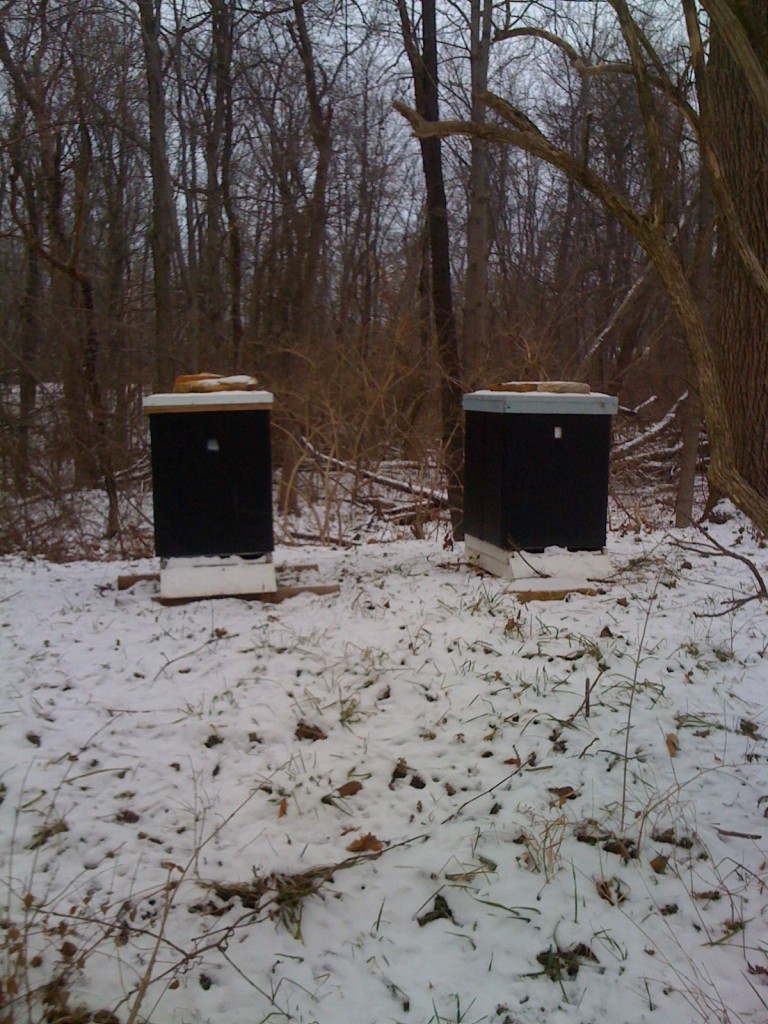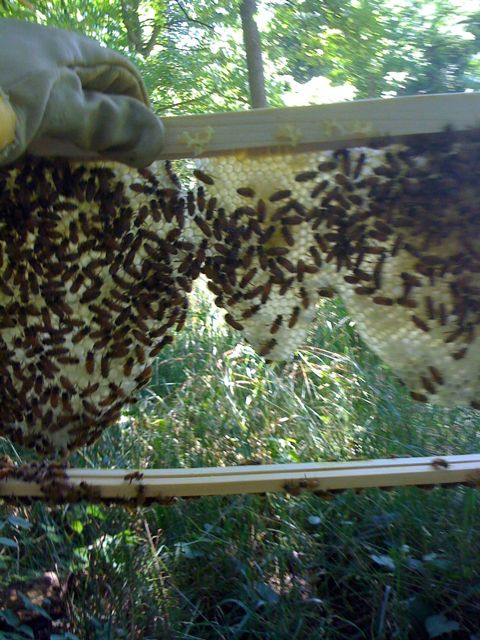

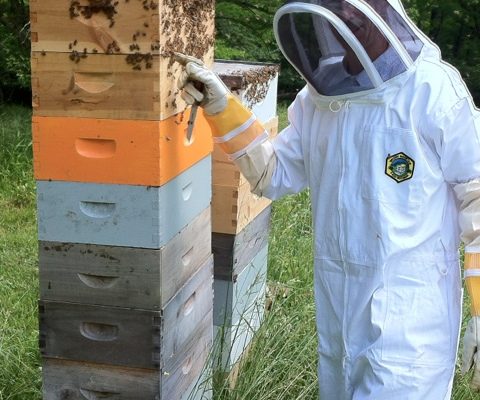
The Monster Hive is Now Ten-Boxes Tall
I was fully prepared to find the bottom boxes in the Monster Hive emptyish. The Monster Hive is queened by a Zia Queen Bee that I purchased last season, and let me tell you, Reader, it is a phenomenon. I’m buying more of those queens this year.
To my surprise, the hive—which was 9 medium-depth boxes tall when Simon and I dug into it yesterday—was booming. From top to bottom, each and every hive body was brimming with bees and brood and honey.
So, instead of reducing the overall number of stacked boxes in the hive (as I had planned), we added to it! Which now makes the hive 10-boxes tall. Aghhhh.
Ten-boxes tall is probably too tall, Reader, but it’s hard to change something that seems to be working so well. So, we left it alone other than to stake it down against the wind with a good rope.
The next time we dig into the hive…probably in a couple of weeks to harvest the honey in it…we should split the Monster into two hives. Which I hate to do. However, I hate for them to swarm, too, and that’s probably on the horizon in a hive of this size.
Simon and I both got decked out in our full bee suits for our hive visit yesterday…and let me tell you, there were some rambunctious bees to deal with.
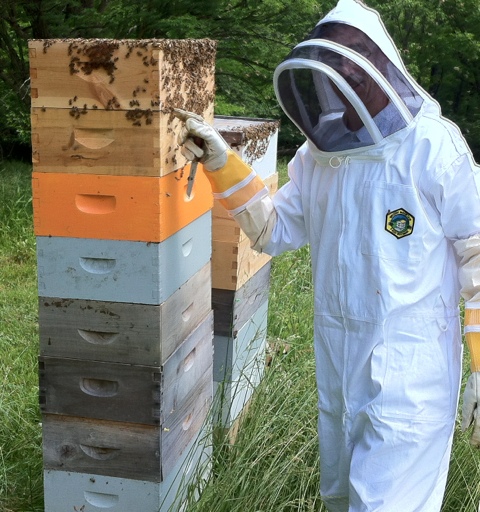
There was also some yummy yummy honey to deal with! Simon took 2.5 frames, and I ended up with 3.5 frames. Simon weighed his…just over 4 lbs per frame of glorious honey.
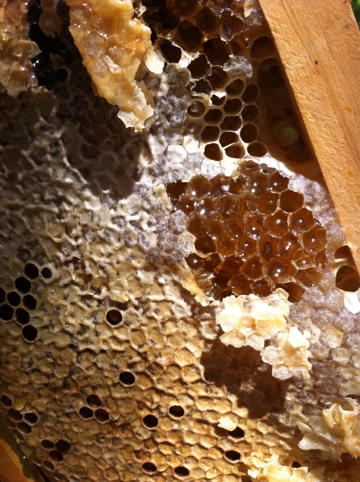
Getting our Ducks in a Row
The Georgian packaged bees and their queens arrive in less than a week. The California packages arrive about a week later. So, yesterday I helped my new bee stewards set up their new hive boxes.
Each bee steward has agreed to host two hives. I’d initially planned to have many bee stewards…I dreamed of bees in every yard…but something told me to set some limits. Thank God. I’ve settled on two stewards who live near me…these are people I like a lot and with whom I’ll enjoy visiting. This summer I’ll have to feed the bees almost daily, so keeping them close to me means they’ll more easily become a part of my daily routine. Because new bees require a lot of attention and food, I have a feeling that keeping these 7-9 hives thriving this summer will be a handful (for those of you doing math: 2 stewards x 2 hives each = 4 hives. I’ll keep 3-5 hives at my place).
For each steward family, I’ve ordered The Complete Idiot’s Guide to Beekeeping, one veil, one hive tool, and one large smoker…to be delivered when they receive their bees. I think that’s a nice way to start off, don’t you?
This year the bees and the equipment belong to me, and I agree to oversee all management. The stewards will receive a percentage of the honey their hives produce. Next year, if the bees survive the winter, the stewards can choose to buy the bees and equipment from me and assume the management. If everyone’s happy with the way it works this year, we can also just stick with our current arrangement. If the stewards tire of the bees, I’ll move the bees to a new yard.
The Universe Forgives My Ineptitude
I had a happy sighting yesterday. Remember that split I made exactly 24 days ago? No? Well, let me remind you:
I took a frame containing some queen cells I’d found in Tomboys, and I made a split…which means I began a new colony from an old one by placing that queen-cell-containing frame in a box of it’s own. To it’s new box I added a nice frame of honey (in order to provide food until the new colony begins its own foraging), two frames of brood (so there’ll be a force of nurse bees available once our newly hatched queen begins laying her eggs), and all the nurse bees that were on those frames at the time of the split (to care for the brood I’d moved in there as it develops).
But I worried about how few bees there were in the new colony, so a week later I did a swap: During the day when all the foragers were out in the field, I moved the entire Tomboys colony to the place occupied by the new split and the split to Tomboys’ old spot. I hoped that all the foraging bees who thought they were returning to Tomboys would actually return to the new split (with their food stores) and decide to live there. This is one way to build a work force in a weaker hive.
But there’s been little activity over the past week or so in the new split. I thought that perhaps the queen had failed and the whole colony had absconded. I really had little hope for this experiment’s success.
Yesterday, though, I noticed a little activity in front of the hive…it looked to me as if new bees were orienting to the front of the hive. It’s a cool thing to see. So, I went to check it out…sure enough, new bees were hovering around the front of the hive trying to zero in on home. They always do this late afternoon around my hives. At around 4 PM, all the new bees fly all around the face of the hive—they face it—as if to say, “Okay, if I leave this place, this is what I’m gonna look for when I come home. This is home. It looks like this at this time of day. I don’t go to the hive next door. I come here.”
You know when you park your car far away from wherever you’re headed? And you sort of look around to get your bearings? You turn to look at your car; then, you turn all around to see where it is in relation to where you’re going; you say to yourself, “Okay, I parked near this big light post…the light post nearest the entrance to the Great American Ballpark. The one from which you can see the river.” Well, that’s what bees do. They do it before they ever leave their hive, and then there’s no need for them to reorient unless I move them.
I’m so happy to know that new bees have just emerged from the split hive…these new bees have to be those which were only eggs when I moved the brood-containing frames from Tomboys. It’s still too early to expect brood from the new queen (if she’s in there). It’s been 24 days now since I created the split. The new queen should begin laying eggs about 21 days after she emerges—that should be sometime this week. I’m not gonna check for at least another week. Well, I might pop the top and peek inside, but I’m not gonna pull any frames. I’m not gonna upset their delicate balance so early in their game.
I’ve held off giving them a name for fear they wouldn’t make it.
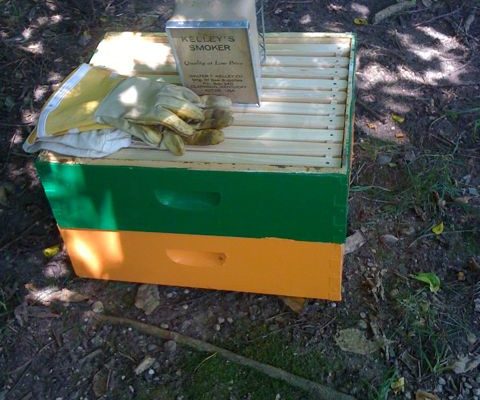
More Space Has Stopped the Bearding
Success!
Yesterday I inserted a box I fashioned from two shallows between my two brood boxes in Girls of Summer. They’re the most robust of our colonies, and they’ve been mighty crowded and hot and bearding like crazy.
So, I pulled deep frames of brood up from the bottom box and into the center of the new box; I interspersed medium, undrawn foundationless frames among all the fully drawn comb in the bottom two boxes. Then, I restacked them. This should give them the room they need to operate.
Yep, I’ve got a real mishmash of frames going on in there now, and there’s quite a bit of empty space that the bees will surely fill up with wild comb, but I guess I can figure out how to deal with all of it later.
My goals:
- Keep these bees from swarming before winter.
- Keep these bees alive over the winter.
- Switch from deep boxes to medium-depth boxes.
- Harvest some honey next year.
- And do all of this without introducing any chemicals.
So, now that I know this addition of space and new frames has stopped the bearding in Girls of Summer, I need to do the same thing for Amazons and Tomboys. Which means I’ve got to head down into the basement and make 20 frames today.
Here are some pictures. They don’t show you much other than what it looks like to rearrange a bee colony.
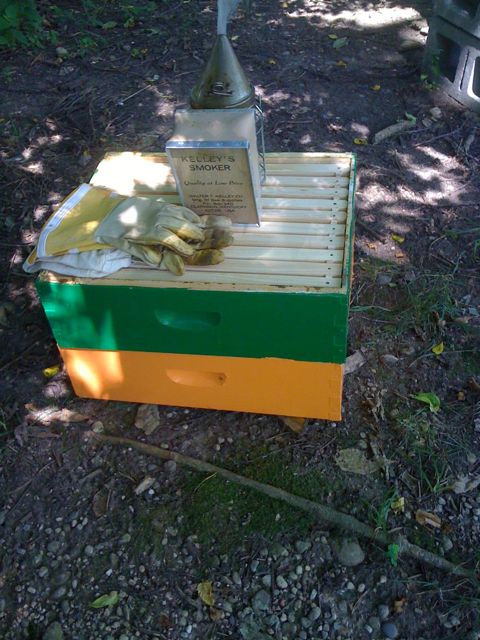
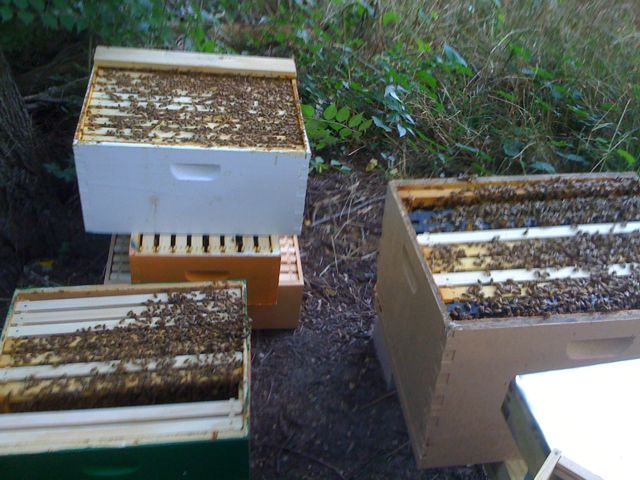

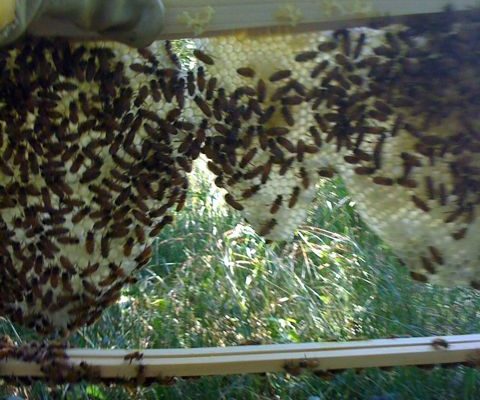
Beautiful Comb Drawn (in One Week) on Foundationless Frames
Upon today’s hive inspection I have one very clear realization: I have no idea what I’m doing.
Why on earth did I think I could manage a hundred-thousand bees? I am not as smart as I look.
Seriously, I get in there with those bees and all those cells and eggs and larvae and brood and nectar and honey and pollen and whatever else the hell goes on in those alien worlds and everything I think I know disappears. Then I realize that I know nothing.
I keep asking the bees to forgive my clumsiness. They seem to. I hope they can teach me.
One thing I do know: Those foundationless frames work great! Look what my wonderful Girls of Summer did with the foundationless frames I gave them a week ago (and started from popsicle sticks as described in an earlier post):
We're Making Some Changes around Here
My weekly Sunday hive inspections yesterday revealed:
Amazons—No signs of the queen yet. I’m choosing to remain patient, though, because I think it’s a little too early to see signs of her post swarm. Amazons swarmed 16 days ago, and it should take about 22-25 days for the new queen to be born, orient, mate, and begin laying.
But I was surprised at how few stores the Amazons had in their hive. They need a queen, and soon.
Tomboys—Loads of new bees hang out and orient to this hive, but the inspection shows no sign of a queen…no eggs, no larva, etc. And there were supercedure queen cells on several of the frames. This really surprised me, but it’s becoming a common story in regards to packaged bees and their queens (another reason to begin using locally raised, hardy, disease-resistant queens. Or learn to harvest the queens raised by my own bees). These supercedure cells (they look a lot like peanut shells) are a sign that the colony either doesn’t have a living queen or they don’t have faith in the quality of the queen they have. They’re making plans for a new one. You gotta hand it to them. They don’t tolerate disfunction.
Girls of Summer—These girls haven’t required much attention at all. They’re the quietest of the three colonies, and though there are some new bees orienting, I thought I’d be disappointed in them. Not so. They are healthy, and the queen is laying in a great brood pattern.
I replaced three old frames in Girls of Summer because the bees are avoiding them…the frames I removed are three I inherited from Chris last year. I replaced them with three frames of fresh foundation, but I wasn’t thinking well when I did that. I need to go back in and replace those three new frames with foundationless frames…frames in which I’ll use popsicle sticks to guide the new comb building.
“Iddee” on Beemaster forum suggests I take one frame of brood and larvae from Girls of Summer (because their queen is a good-laying queen) and put it in Tomboys. After 7 days, he says, I should check for queen cells on that frame; if I find more than one, I’m to cut one out and put it into Amazons. He gave me directions for doing this procedure.
This, Reader, is the direction I’ve been waiting for. It’s time to start managing my bees. It may be the only way I can develop strong hives organically.
I’ll totally keep you posted. With pictures (sorry about no pictures. Yes, I take my camera out there, but it’s cumbersome. And I get so involved in things that I forget).
Swarm On
The bees’ primary biological drive is to swarm. I read it this morning in Bee Culture magazine, and the moment I read it, it seemed right. Reader, if you’re new to bees, you’ll want to learn that when bees get too crowded in a hive, they raise a second queen. Once the new queen is ready to take on her new job, the old queen leaves the crowded hive with half of that colony’s bees, and they go find a new home. This move is called swarming. The new queen stays back in the established hive and takes on the job of producing more bees. One of our two colonies came to us as a result of a captured swarm.
Bees ensure their species’ survival by swarming…think of it as teenagers leaving home and getting their own apartments. Many beekeepers manage their hives to keep their bees from swarming, because once those bees leave, honey production decreases. I am of a mind to let them swarm. How about that…I am developing a beekeeper philosophy.
Using the Word "Winter" as a Verb
I’m worried about the bees. Perhaps because we have snow on the ground and our temperatures this week should be cold…highs ranging from 11 to 30 degrees. And I’m not sure the girls have stored enough food with which to winter. Weird to use “winter” as a verb.
Last month, I fed both of our hives sugar water, which they initially guzzled down. But then they completely stopped eating it. So, I removed the feeders and left them alone. But now I’m thinking I should have fed earlier. And more. And now I’ve covered the hives with black cardboard boxes and called it all off until spring. There’s really nothing more I can do other than prepare for warmer weather. I hope I haven’t killed them. Then again, I wonder how they would do with no human management whatsoever. And I’m almost of a mind to leave them alone and alone and alone and see how things go.
In the meantime, I am preparing the TwoHoneys business cards and the TwoHoneys labels and fancying up the TwoHoneys website. I plan to build a desire for honey such as the world has never before known.
